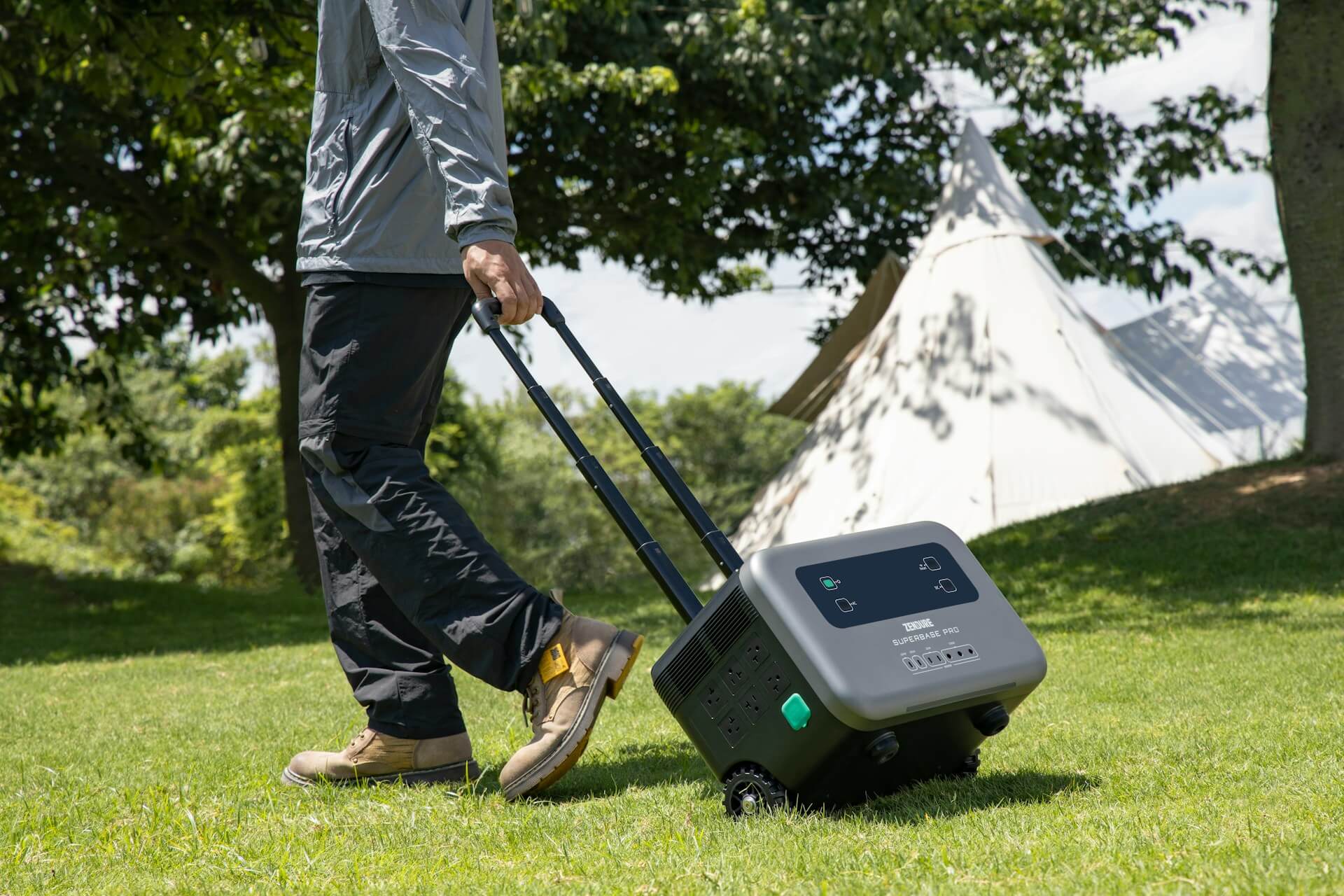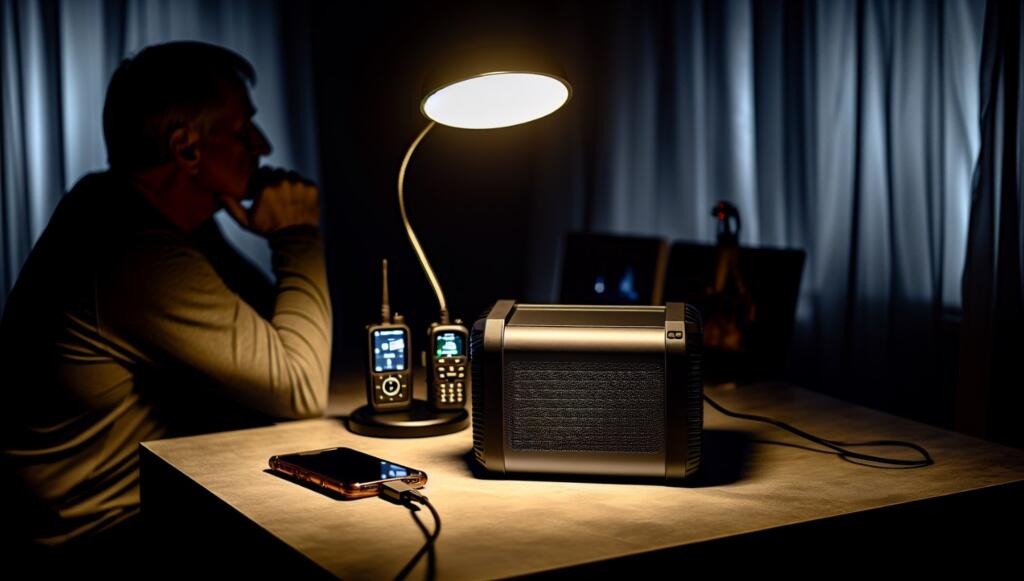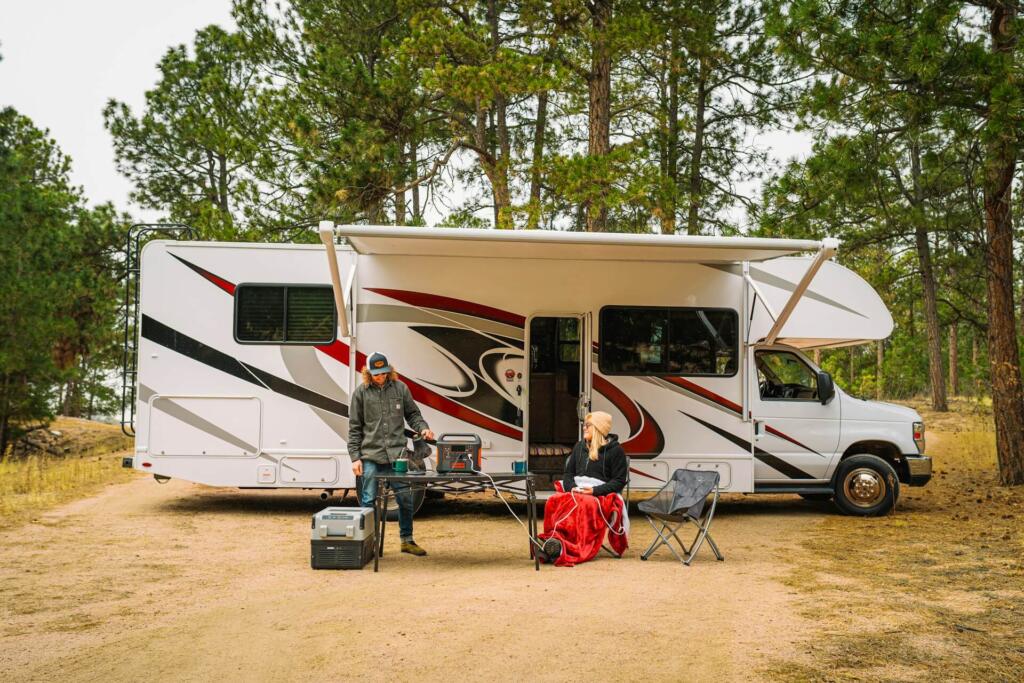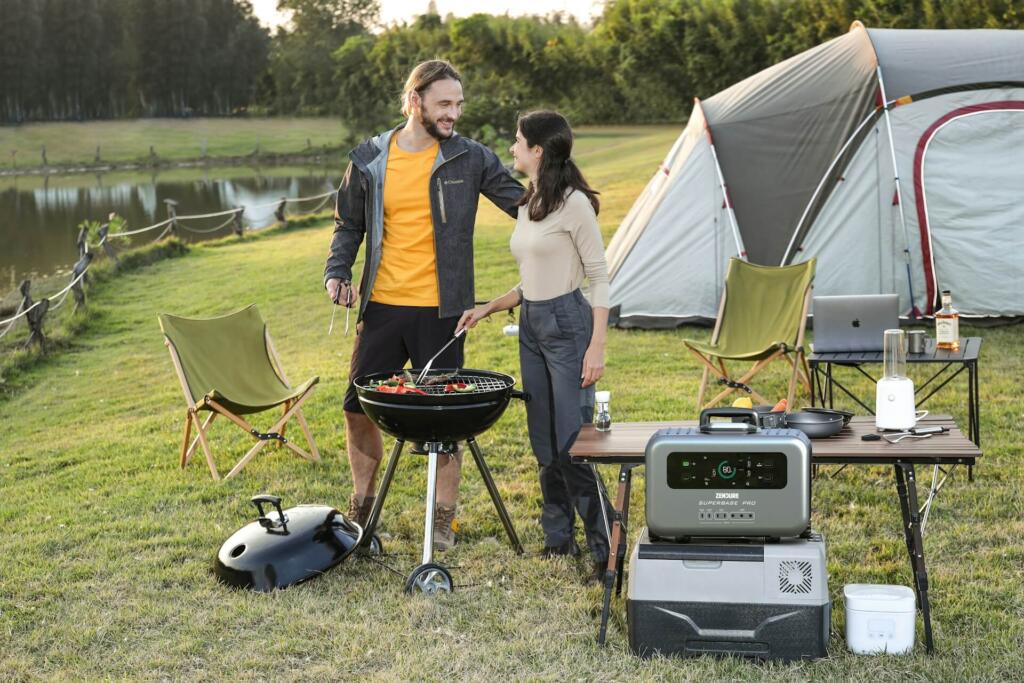Understanding How Long Do Portable Power Stations Last

How long do portable power stations last? Typically, you can expect anywhere from 3 to 10 years, influenced heavily by battery type, usage intensity, and care. In the following sections, I dive into the specifics of battery technology, device demands, and maintenance tips that shape the endurance of your portable power station.
Key Takeaways
- Batteries matter big time! Your portable power station’s lifespan hinges on capacity and type—choose Lithium Iron Phosphate for endurance and Lithium-ion for that speedy recharge.
- Don’t just plug and pray. Manage your juice wisely—use energy-efficient devices and know your power station’s watt-hour worth to keep blackouts from becoming meltdowns.
- Extend your power station’s lifespan. To ensure your portable power station stands the test of time, avoid letting the battery run too low, store it in a temperate environment, and consider using solar panels to benefit from sustainable charging methods.

Factors Affecting Portable Power Station Lifespan
The lifespan of portable power stations is not a random number pulled out of a hat. Various factors come into play, from the battery’s capacity to the power consumption of connected devices.
I’ll explore these factors thoroughly.
Battery Capacity and Types
A portable power station is only as good as its battery. The capacity and type of batteries have a significant role in determining the size, weight, charging speed, and most importantly, the longevity of portable power stations. Lithium-ion batteries, for instance, offer faster charging times and higher energy densities, which make them suitable for frequent use. However, they do come with a shorter cycle life, temperature sensitivity, and potential safety concerns under heavy draw.
On the other hand, lithium iron phosphate batteries are known for their longer life expectancy, estimated up to ten years. The EcoFlow Delta Pro, for example, uses an LFP battery which maintains 80% capacity after 3,500 cycles. This type of battery promises not only longevity but also improved safety, making lithium iron phosphate batteries increasingly popular in portable power stations.
Power Consumption of Connected Devices
The power consumption of the devices you connect to your portable power station can have a significant impact on its power supply duration. A refrigerator or power tools, which are energy-hungry appliances, will deplete the battery much faster than a few lights or a laptop. Therefore, understanding and respecting the operational wattage limits of your power station is crucial.
To extend the power supply duration, consider conserving energy by switching off idle devices, using power-saving modes, and confirming device compatibility. Such measures not only extend the power supply duration but also help in preventing inadvertent overloads.

Device Efficiency and Inverter Type
The inverter type in a portable power station can significantly affect device compatibility and overall efficiency. Pure sine wave inverters, for instance, are superior to modified sine wave inverters in terms of power conversion efficiency, thus minimizing energy loss and potentially extending both the electronics and power station lifespan.
However, keep in mind that while pure sine wave inverters are more efficient, they also come at a higher price. This trade-off between cost and efficiency is something to consider when choosing a portable power station. Particularly, if you intend to power sensitive electronic equipment such as medical devices or sophisticated computing hardware, you’ll definitely want to invest in a power station with a pure sine wave inverter.
Calculating Portable Power Station Runtime
Knowing how long your portable power station will last can be pretty handy, especially during extended power outages. The capacity of a portable power station is measured in watt-hours (Wh), which indicates the total energy it can store and deliver to connected devices. But how do you calculate the runtime?
All you need is a simple formula: ((Total Capacity of the Product x 0.85) ÷ Watts Required) = Estimated Hours of Usage. This formula takes into account the typical inverter efficiency rate of around 85%. Remember, the efficiency of an inverter impacts how much power is converted without loss, which significantly affects the runtime of a portable power station.
How to Extend Portable Power Station Lifespan?

Comprehending the factors that influence the lifespan of portable power stations is vital, but it’s just as imperative to learn how to prolong their lifespan. A few simple strategies can go a long way. For instance, avoiding deep discharges, keeping the battery charged at around 50% before long-term storage, and storing the power station at room temperature can all help protect battery health.
In addition, here are some tips to extend the lifespan of a portable power station and ensure a smooth portable power station run:
- Perform routine maintenance every 3-6 months
- Use the original charger
- Integrate renewable energy like solar panels
- Ensure the power station remains clean and dust-free for optimal efficiency.
Comparing Popular Portable Power Stations
The portable power station market is abundant with options, each offering unique features and capabilities. Among the most prominent brands, Jackery, Goal Zero, EcoFlow, and Rockpals have established themselves as leaders in the industry. These brands have been consistently delivering products that cater to a variety of needs, from casual camping trips to more demanding off-grid living scenarios.
The EcoFlow Delta Pro, for instance, captures attention with its impressive 3600Wh LFP battery capacity, accommodating an extensive range of devices. Jackery’s Explorer series is also noteworthy for its user-friendly interface and portability, while Goal Zero’s Yeti power stations are revered for their rugged build and reliability.
Rockpals power stations offer versatility with their array of output options, ensuring compatibility with numerous devices. Meanwhile, BougeRV emerges as a promising new player in the field, quickly gaining recognition for its innovative approach to portable power solutions.
Connectivity features like Wi-Fi, Bluetooth, and Ethernet are becoming increasingly significant, as they allow for remote monitoring and control via dedicated apps. This is particularly evident in models like the EcoFlow Delta Pro, which integrates these technologies for enhanced user convenience.
Additionally, manufacturers often provide estimations of the number of times a power station can charge a phone or run appliances, which can be a helpful guide for consumers when making an informed decision.

Solar Charging Options for Portable Power Stations
Harnessing the power of the sun to charge portable power stations is not only environmentally friendly but also offers endless power supply during extended power outages. However, to maximize charging efficiency and avoid potential damage, the wattage of the solar panel should match or exceed the power station’s capacity, which is its maximum solar input rating.
Moreover, environmental factors such as weather and location that affect sunlight intensity need to be considered for optimal solar charging performance. Ensuring solar panels are properly angled toward the sun, kept clean, and unobstructed can maximize the efficiency of solar charging.
As for the solar panels themselves, many brands offer the ability to daisy-chain multiple panels for increased solar input. For example, the Bluetti PV350 is recommended for fast solar charging with its 350-watt capacity and 23.4% efficiency. However, it comes with a higher weight and cost.
Ultimately, your choice of solar panel should align with your needs and environmental preferences.
Emergency Preparedness: Portable Power Stations in Action
In this age of increasing natural disasters and severe storms, a reliable power source, such as a dependable backup power, is indispensable. Portable power stations serve critical roles during emergencies by providing power for communications, lighting, and essential medical devices. Models like the Zendure SuperBase Pro 2000 and Anker 555 PowerHouse even offer rapid transfer speeds for backup mode, ensuring minimal interruption to sensitive equipment.
Furthermore, portable power stations, also known as portable generators, offer the following advantages:
- Safe indoor use without harmful gas emissions
- Silent operation for less disruption
- Lightweight, portable designs for quick deployment in emergency evacuations
For instance, higher capacity stations like the EcoFlow Delta Pro and the expandable Jackery Explorer 3000 Pro can run appliances such as TVs, laptops, and fridges during emergencies.

Off-Grid Living with Portable Power Stations
Living off-grid doesn’t equate to a life without power. Portable power stations make sustainable and efficient off-grid living achievable. Integrating renewable energy sources like solar panels or wind turbines can significantly improve your power solutions. However, it’s crucial to select solar panels that are compatible with the power station’s requirements and input connectors.
An effective energy usage plan is also essential for off-grid living. This involves understanding the solar panel’s recharge rate and the power consumption of your household. And remember, when charging a portable power station off-grid, consider the renewable power source availability, time constraints, and the power station’s specific charging capabilities.
Choosing the Right Portable Power Station
The selection of the right portable power station goes beyond merely opting for the one with the greatest capacity or the most features. It’s about finding the best portable power stations that meet your specific needs. To test portable power stations, consider the total power output capacity, weight, and input charging options as crucial factors. For example, if you plan to use the power station for outdoor activities, a lighter model may be more suitable. Ultimately, the choice of a portable power station depends on your individual requirements.
Cost is another significant factor. However, when assessing cost, consider not just the initial investment but also the long-term savings and brand reliability. After all, a reliable brand often indicates quality and better customer service.
To Colclude
In a nutshell, understanding the lifespan of portable power stations and how to extend it can be a great asset, whether you’re facing unpredictable power outages, living off-grid, or simply enjoying the great outdoors. With the right knowledge and the right power station, you can be prepared for any situation and enjoy the convenience of portable power wherever you go.

Frequently Asked Questions
How long can you run a TV on a portable power station?
Yes, depending on the size of the portable power station, you can run a TV for a few hours to several days. Enjoy your binge-watching session!
Is it worth buying a portable power station?
Yes, it’s definitely worth buying a portable power station! It’s convenient for travel and can handle a variety of devices with its different output ports. So why not power up on the go?
What is the life span of a portable power station?
The life span of a portable power station typically ranges between 5 and 15 years, depending on factors like brand quality, frequency of use, and maintenance. So, choose wisely and take good care of it!
Which battery type is better for portable power stations, Lithium-ion or Lithium iron phosphate (LFP)?
Lithium iron phosphate (LFP) batteries are better for portable power stations due to their longer lifespan and eco-friendliness. Plus, they require less maintenance, making them a reliable choice.
How can I maximize the runtime of my portable power station?
To maximize the runtime of your portable power station, be mindful of your energy usage by turning off unused devices, utilizing power-saving modes, and ensuring device compatibility. This can significantly extend the power station’s runtime.
